In the UK, we pride ourselves as being a nation that loves animals. We donate readily to the Dogs Trust or to Battersea Dogs & Cats Home, while 53% of us has a pet.
Our pets are protected from abuse under the Animal Welfare Act, and a person can be prosecuted if the animal's needs aren't taken care of. But our adoration of dogs and cats doesn't extend to our wildlife. As well as being a nation of pet lovers, we are also lovers of murderous 'traditions' that supposedly make us all the more 'British'. Loving one animal, while being apathetic about the mistreatment or murder of another - is called speciesism. Britain is a nation of speciesists, not recognising our hypocrisy as we buy the best non-shedding pedigree dog to fit our lifestyles.
All in the name of tradition
There are a number of murderous so-called 'traditions' that take place all over our countryside. The Hunting Act came into force in 2005, making it illegal to hunt animals with dogs. Yet almost twenty years later hunts continue to flout the law as if the legislation never existed in the first place. Despite hunting being illegal, there are still 316 hunting packs in Great Britain. With their whimsical talk of 'tradition', they hoodwink the rural public, convincing them that they're taking part in wholesome British fun. And the police and courts are all too ready to let hunters off the hook when they say that they're not actually hunting real foxes, hare, mink and otters, and that any animals that die are purely accidental.
But perhaps the best example of the Great British Bloodlust is stag hunting. Barbaric hunters on quad bikes and motorbikes, accompanied by hounds, chase a stag to exhaustion. He is then wrestled to the ground, while his throat is slit and he is shot. Once they have killed the stag, the hunters then butcher him. Different parts of his body are taken as trophies. And it's not just our rural villages that are filled with those intent on murdering wildlife. Our moors are one big gun-wielding playground, too, filled with grouse shooters who, quelle surprise, label their bloodsport as a British 'tradition'. Half a million grouse are murdered each year, while countless natural predators such as foxes and birds of prey are snared, trapped and poisoned so that they won't hunt the shooters' quarry.
Pheasants also share a similar fate in the name of tradition. The British public may well get excited as they see a colourful pheasant run across the road. But do we actually stop for a second and think about why the pheasant is here in the first place? More than 40 million of these non-native birds are released into our countryside each year, solely for the pleasure of the shooting industry.
Even our most protected animal isn't safe
Because we are supposedly a nation of animal lovers, our government passed a law to protect one of our most iconic species, the badger. But our most protected animal is also one of our most targeted. Defra and Natural England's annual badger cull, ongoing since 2013, has seen half of Britain's badger population shot in cold blood. The cull has killed 210,555 badgers so far, while a number of areas in the country are now facing local badger extinctions. The government is set to continue murdering badgers in local areas indefinitely. Its reason? To try to protect cows from bovine TB. Of course, cows transmit bTB to each other, but in order to protect cruel industrial farming practices, the government has found a convenient scapegoat in the helpless badger. But it isn't just the government's licenced contractors who are murdering our badgers.
Throughout the country there are also badger baiters who take sick pleasure in setting dogs on the mammals. Badger baiting is a cruel and secretive bloodsport which, although illegal, is prolific in Britain. Baiters send their terriers down a sett to find a badger and attack her, either to draw her out or hold her at bay. Once the badger is cornered by a dog, terriermen use spades to dig the the poor animal out. The men then set their dogs on the badger, who will rip her up while she is still alive. The death is slow and torturous. Sometimes the badger isn’t killed, and is sold to underground baiting rings. Animal Survival International estimates that more than 10,000 badgers are murdered through baiting every year.
The use of greyhounds
As if this wasn't enough, the sick 'sport' of hare coursing is rife in the UK. It is, of course, illegal under the Hunting Act, but that doesn't seem to deter coursers. Two greyhounds or lurchers will chase the hare, while bets are placed on which of the two dogs will be able to kill the hare quicker. The dogs will have a tug of war over the hare, and the terrified creature is ripped to pieces. This sport is reenacted using a fake hare in greyhound racing stadiums across England (although has almost died a death in Wales and Scotland). While we love our pet dogs, the same can't be said for those who buy, sell and make money from racing greyhounds. The sport is illegal in most states in the US, yet remains both legal and popular in the UK.
In 2022, 99 racing greyhounds died at the track side, while many more died away from the tracks. Meanwhile, almost 5,000 racing greyhounds were injured at the track side in 2022 alone. From 2018-2022, 22,284 hounds were injured at the tracks. Supporters of greyhound racing bemoan that banning it will be wiping out a Great British cultural heritage. They claim that the hounds actually love the sport, ignoring the fact that thousands of greyhounds live and work in inhumane conditions. But there is hope: the sport is in serious decline. In its 1940s heyday, more than 70 million people would attend greyhound stadiums per year, but there are now only 19 tracks left in the UK.
Racing greyhound Dorotas Wildcat. Photo via Wikimedia Commons
Horse racing
As a nation of supposed animal lovers, one of our great passions is the Grand National. Around 7.5 million people watched or streamed the event in both 2022 and 2023, while 150,000 cram into Aintree each year. Meanwhile, more than 1 million bets are taken while the event is taking place. The public is willing to gamble millions of pounds on this futile race, while bookmakers reap in the profits, not giving a damn whether the horses live or die. Only 15 out of 40 horses managed to complete the course in 2022, while four horses died during the festival. And in 2023, three more horses died. iNews reported:
"Hill Sixteen was put down after suffering a broken neck at the first fence of the main steeplechase on Saturday afternoon. It followed the deaths of Dark Raven and Envoye Special who were put down after falling during earlier races on Saturday and Thursday respectively. According to the League Against Cruel Sports, 62 horses have died at the Aintree festival since 2000, 16 of which were killed in the Grand National."
300 Animal Rising activists tried to prevent the event from taking place in 2023. The race was delayed, but inevitably still took place. Protester Alex Lockwood wrote in the Guardian:
"The horse racing authorities and betting industry defend slow incremental “welfare” improvements, and yet horses continue to die with awful regularity: 50 so far on the tracks in 2023. On average, a horse dies every other day on the tracks, over jumps and on the flat, with many more dying in training and the paddock. The dangerous institution of the Grand National should have been retired long ago. Where we did succeed is in showing that this is a much bigger problem than just one race. We protested because everywhere we look we see a broken relationship with animals and the natural world."
Carnage at the Grand National, via News Sport screenshot
Animal testing
As a nation, we'll do anything for our beloved pet dogs. After all, they're one of the family. Yet our ingrained speciesism means that we don't extend the same adoration for all those animals trapped in research laboratories across the country, being tested on in the name of human health. Let's take MBR Acres, an industrial puppy breeding facility in Cambridgeshire, as an example. 2,000 beagle puppies are bred in the facility in order to be tested on for the vivisection industry. At between 12 and 16 weeks old the puppies are driven to a laboratory. Camp Beagle summarised the horrors of MBR Acres when it wrote:
"[The puppies] will be kept in solitary confinement all of the time, apart from when they are taken out to have poison poured down their throat via a tube, or some equally vile experiment such as inhaling chemicals through a mask or being burned. Until they die. Or until they don’t die and then they are killed.
They will then be cut up to see what the results of the chemicals or other substance has had on their tiny body. And no, you’re not reading some gothic horror novel, this is happening today, at a venue not too far from you, here in the UK."
Around 4 million animals, such as dogs, cats, monkeys, rabbits, horses and mice, are tested on in the UK every year in the name of researching disease and developing new drugs. Animal Aid summarises well the brutality of animal research in its report, The Case Against Animal Experiments:
"Toxicity tests typically involve animals being force-fed substances through a tube into their stomach, or having them rubbed onto a patch of shaved skin. Some tests involve animals actually being poisoned to death. In disease research, animals are physically injured or genetically modified in order to mimic some of the symptoms of the illness being investigated. This can involve, for instance, breaking animals’ bones, removing vital organs and subjecting them to near-drowning experiences."
Some of the biggest culprits of animal testing are our universities. More than 1.7 million animals are tortured, paralysed, brain damaged and killed on campuses every year. These beings feel pain and suffer intense fear, just as we would if we were subjected to the same. Of course, it doesn't have to be this way. The science is flawed, and we need to transition completely to medical research and testing using human cells and tissues, as well as advanced computer-modelling techniques.
Inside MBR Acres. Photo via Camp Beagle screenshot
Let's truly be a nation of animal lovers
Many of us don't like to think about the intense suffering of animals and birds caused by humans. We would rather close our eyes to the brutalities because if we open ourselves up to the suffering, our hearts will break. But if we want to be a nation of animal lovers, our compassion can't just extend to our pets. It needs to encompass all sentient beings. You can take a number of actions to make the UK truly safe for animals. You can join Protect the Wild's campaign to introduce the Hunting Of Mammals Bill, which would finally ban hunting with dogs for good. If you're a student or professor, you can campaign against animal experiments at your university. And, if only for the sake of badgers, you can think about your food choices when you tuck into dinner. We are a nation that kills not out of necessity, but for sick pleasure. We are better than this: it's time we stop feigning apathy and take proper action.



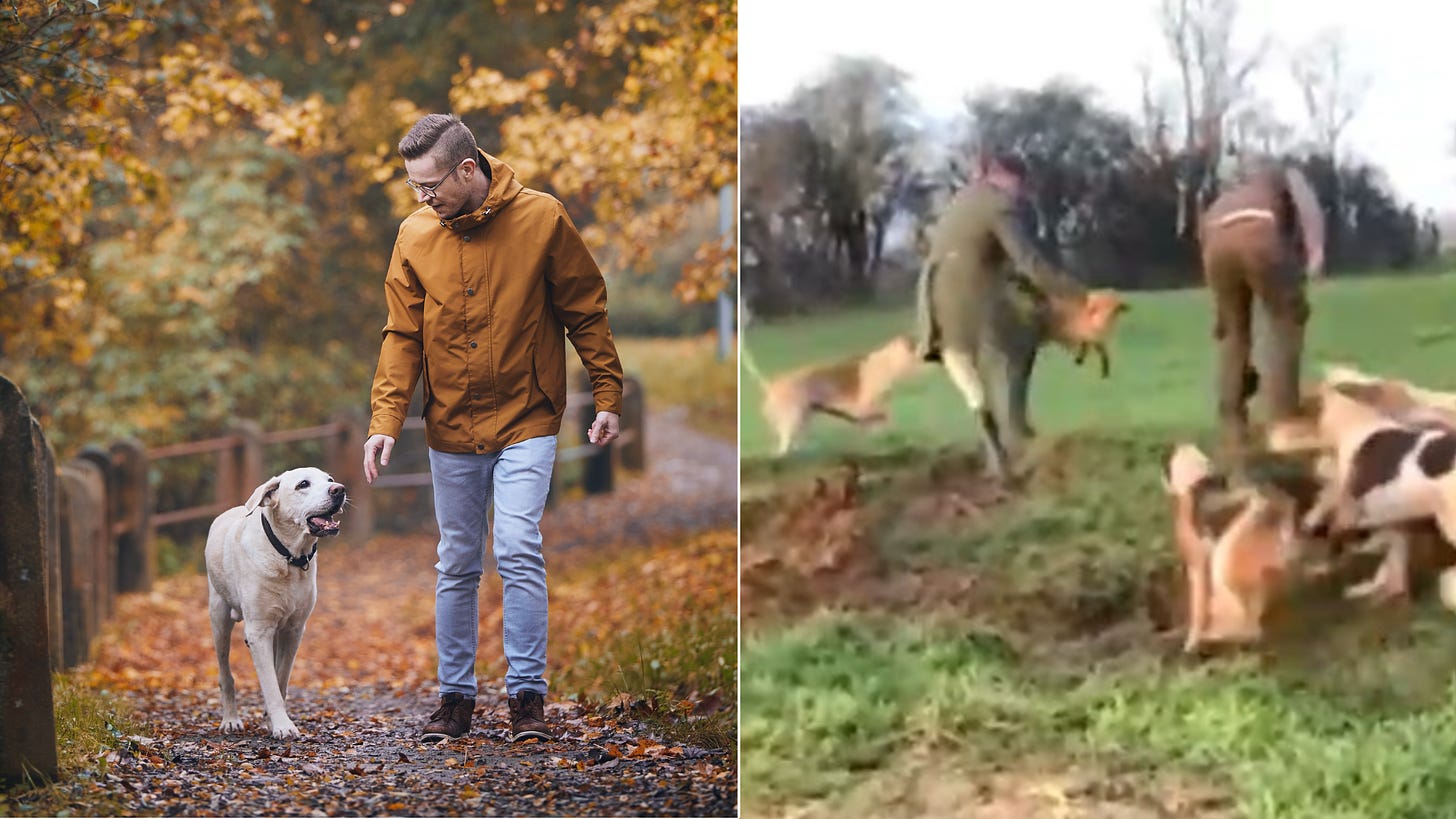
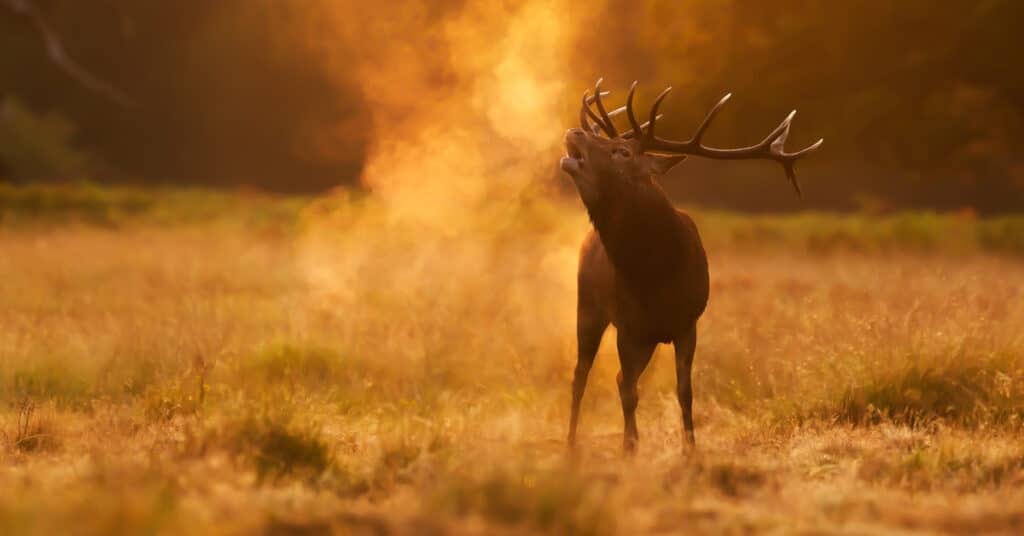
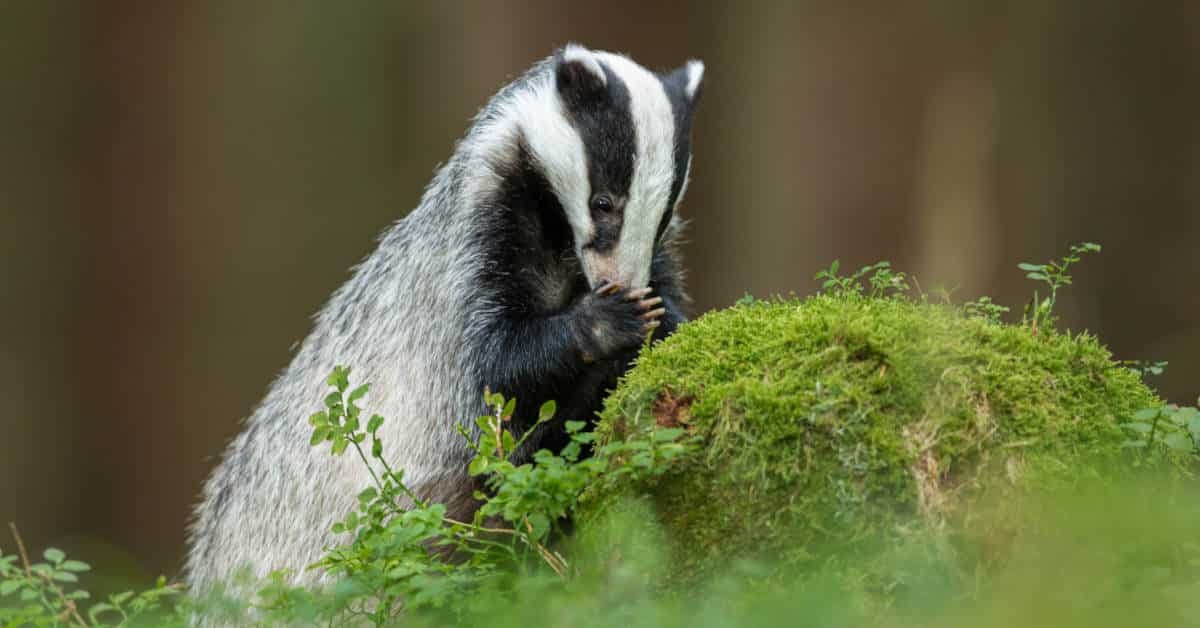
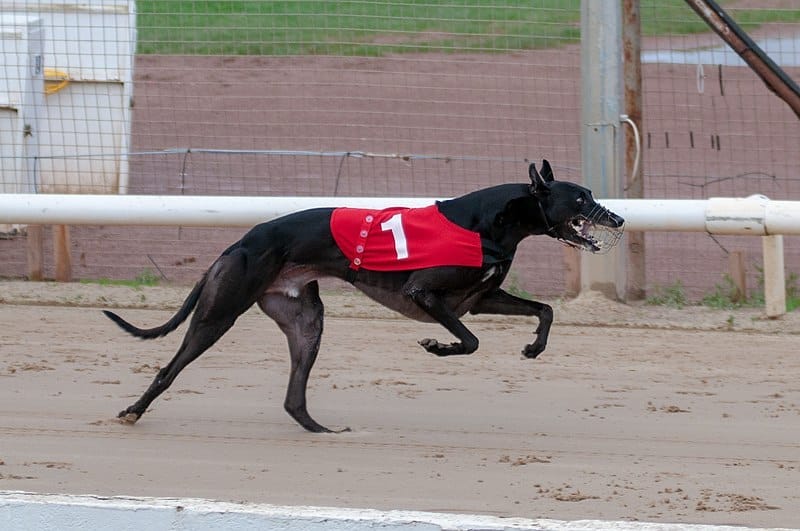
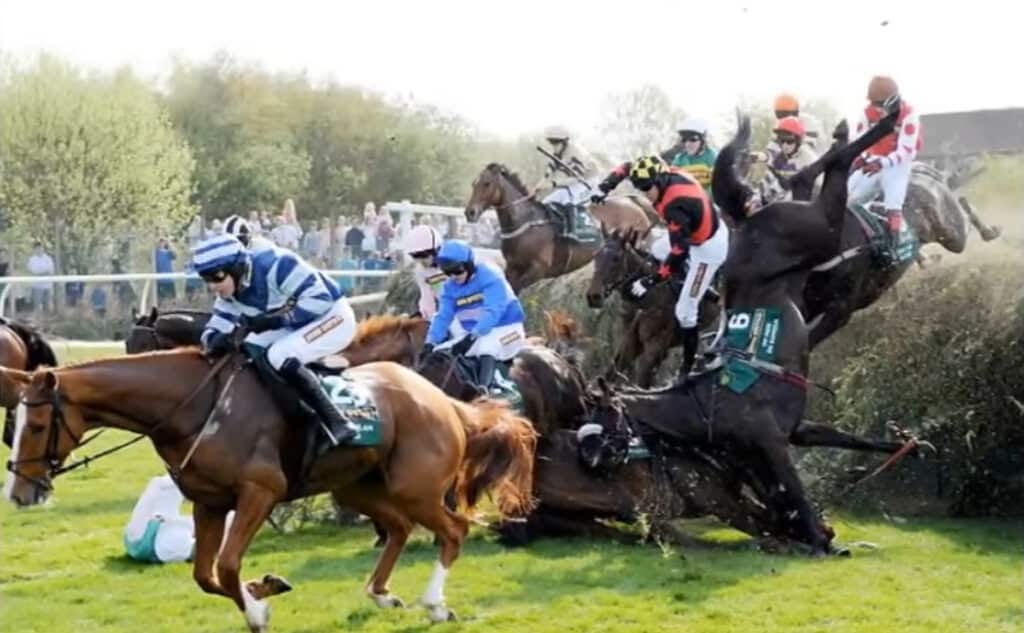
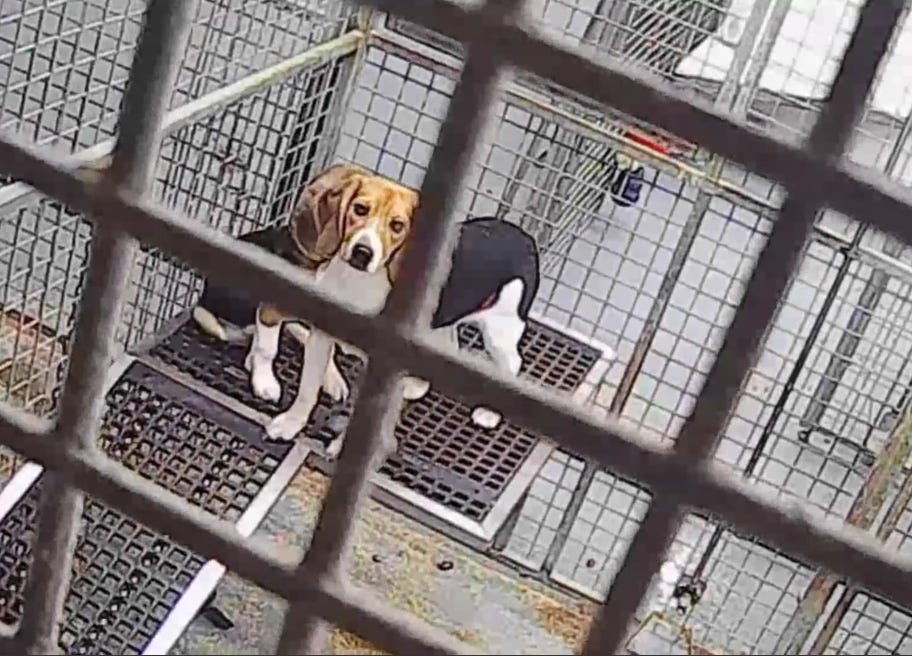
👏👏
Thank you for all you do. This article needs to be compulsory reading for everyone in this country.
So true. There is 24/7 cruelty going on all over the world in the name of food, sport, research and entertainment. The human race knows no depths when it comes to abusing and exploiting the voiceless and it makes me sick.